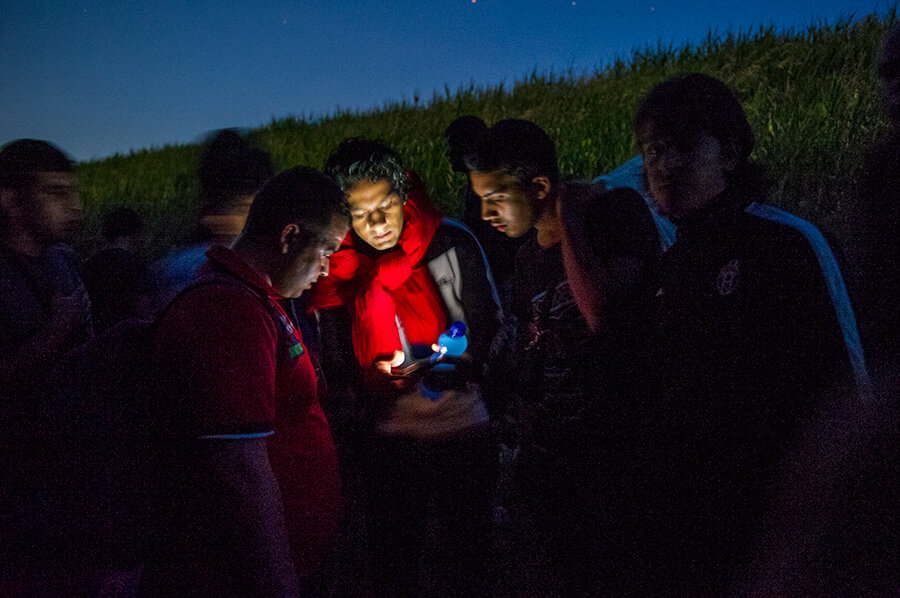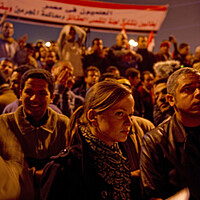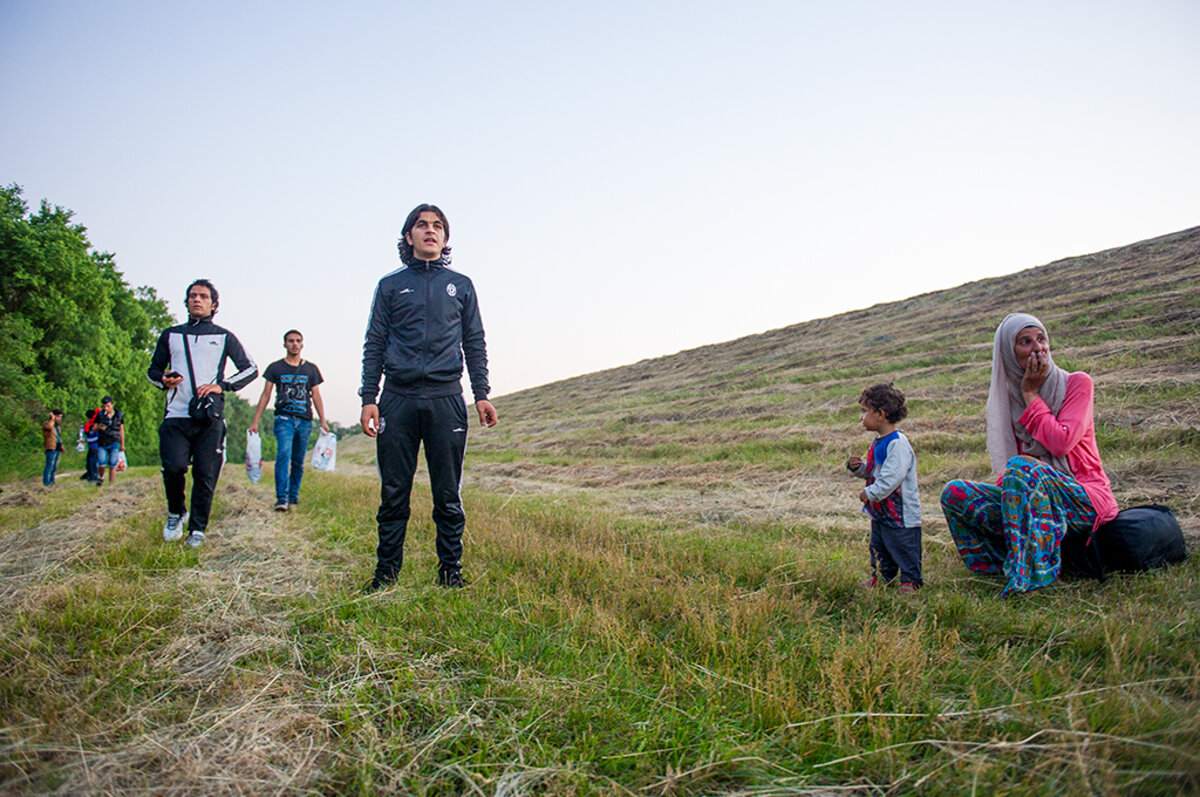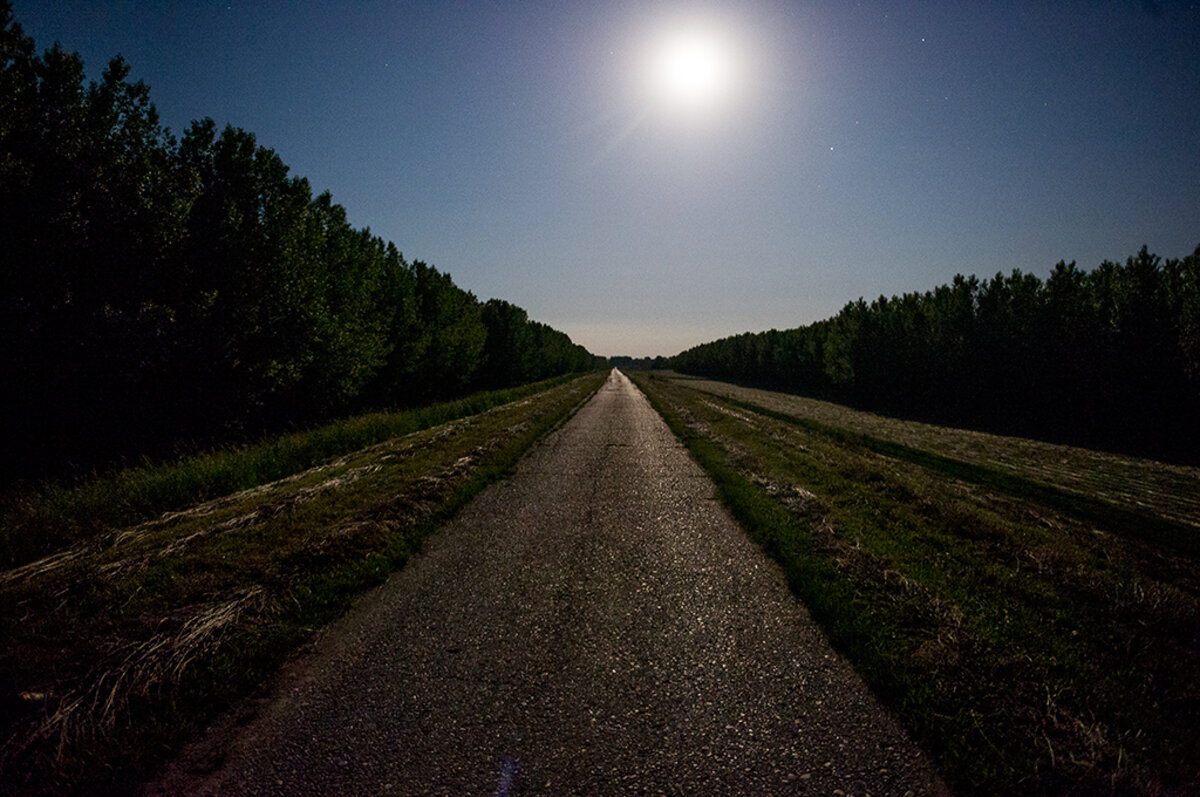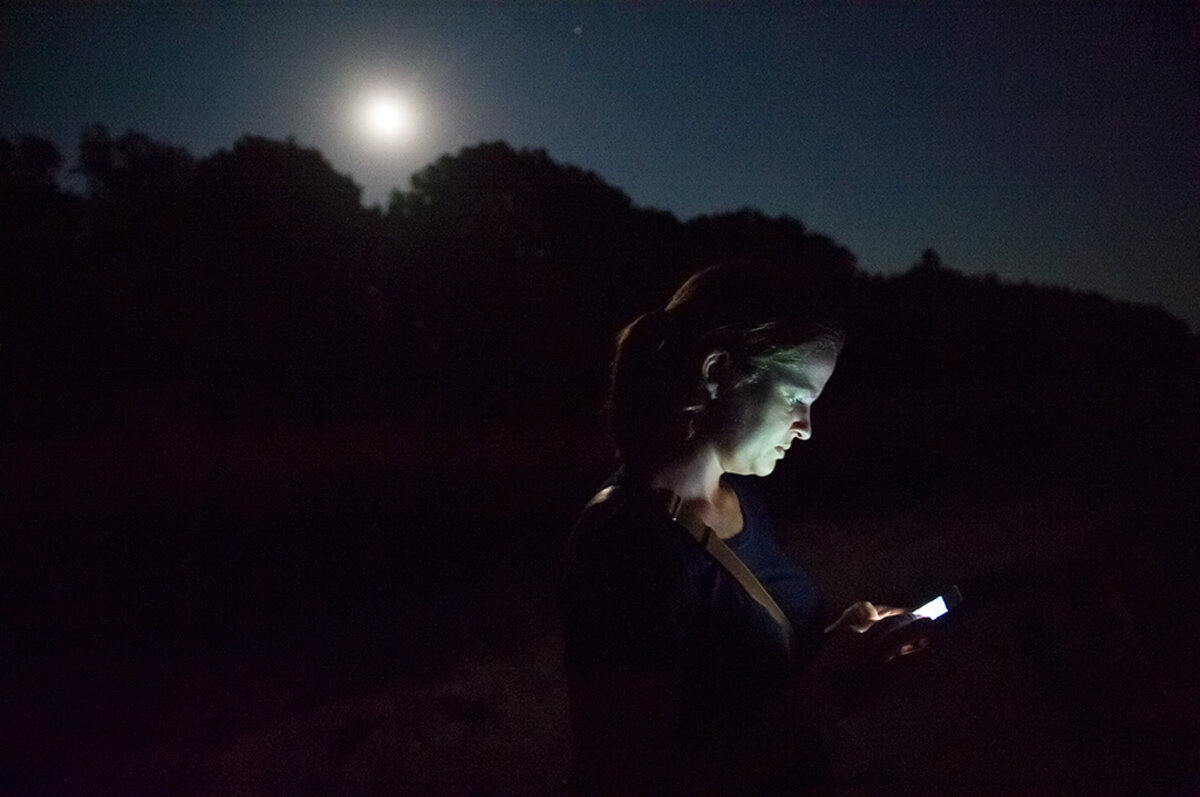On the uncertain road to Europe with Syrian refugees
When Monitor photographer Ann Hermes and I were reporting on migration for this week's cover story (“Out of Syria; A 1,500-mile journey of hope and hardship,” July 20), we wanted to experience what it was like for the people trekking across the Balkans seeking safety and a better life in Europe. Tens of thousands of people, many of them refugees from Syria, Afghanistan, and Iraq, are entering Greece from Turkey, then heading north through Macedonia, Serbia, and Hungary to reach their desired destinations, often Germany.
They cross borders on foot, hoping to evade detection. The Hungarian border is the most difficult. Police there are reinforced by the European Union’s border agency, Frontex, and they have thermal-imaging cameras. Getting caught in Hungary means requesting asylum there, which can end a migrant’s journey in an undesirable location, or land them in detention for weeks.
In Kanjiža, a small Serbian town near the border with Hungary, we met a group of eight who planned to cross that night. Among them were a couple with an 18-month-old child and their 13-year-old nephew. There were several young men as well. One of them, Tarek, had a wife in Turkey who was six months pregnant. He planned to bring her to Europe once he’d received asylum.
The migrants agreed to let us accompany them that night. Ann and I didn't realize what we were in for. Starting in Kanjiza, we walked through a park, where we passed locals out for a jog or an evening stroll. They eyed us as we passed. Then we descended into a forest by the Tisza River, which we’d follow all the way to the border.
A path had been worn through the woods by the refugees who’d preceded us. The group walked quickly, single file, and mostly quietly. We soon were aware of other groups ahead of us and behind.
We walked at a fast pace as darkness fell, and a full moon rose, illuminating the landscape like a spotlight. When we reached open patches with no trees, the group sped up. Once, when we heard a car nearby, everyone sank to the ground, still and silent, until it was gone. Eventually, we joined up with some young men who seemed to have more knowledge of the border area. But these men wanted to walk faster. The mother in our group, Fatheya, was carrying her child and struggled to keep up. One of the young men tried to help her by carrying the youngster, but he fussed unless his mother was carrying him, and no one wanted a noisy child this close to the border.
At the start of our journey, the young men in the group had been laughing, joking, and taking selfies with us. But the closer we got to the border, the more tense everyone became. As we drew nearer the boundary, Ann and I stopped, said goodbye to our fellow travelers and watched them disappear into the darkness.
At this point it was close to midnight, we had walked about nine miles, and my feet were aching. But we still had to get back to Kanjiza. We had no car or driver to pick us up. So we turned around and started walking back.
Hours later, exhausted, we were still plodding along country roads in the darkness. We’d hoped to find someone to drive us in the village we passed, but the place seemed asleep, with no taxis in sight. We tried hitchhiking, but no one would pick us up – thinking we were migrants, perhaps. So we walked the nine miles back to town. By the time we arrived, in the middle of the night, with blistered and sore feet, we had a new appreciation for the the difficulty of the journey these refugees are undertaking.
The next day, Tarek messaged me: The group had crossed the border undetected. They were on their way to Austria.



